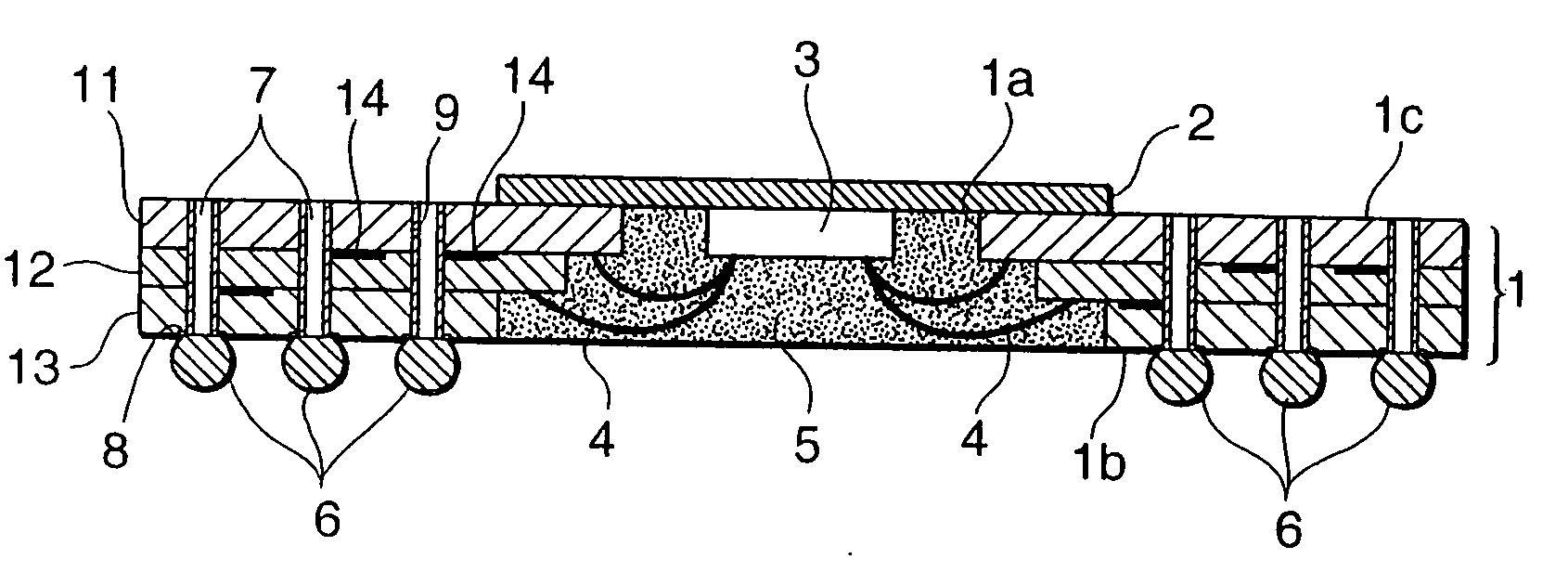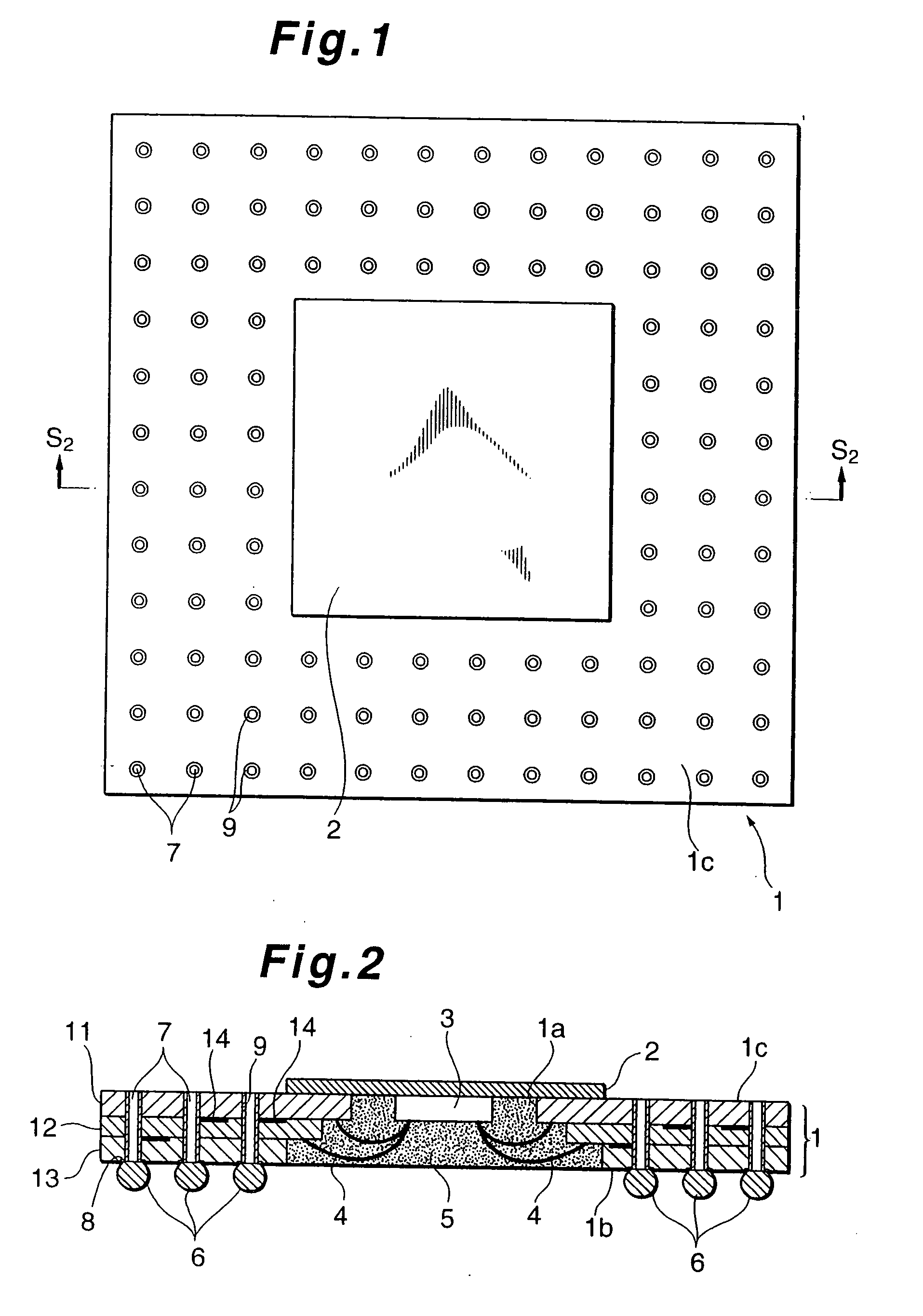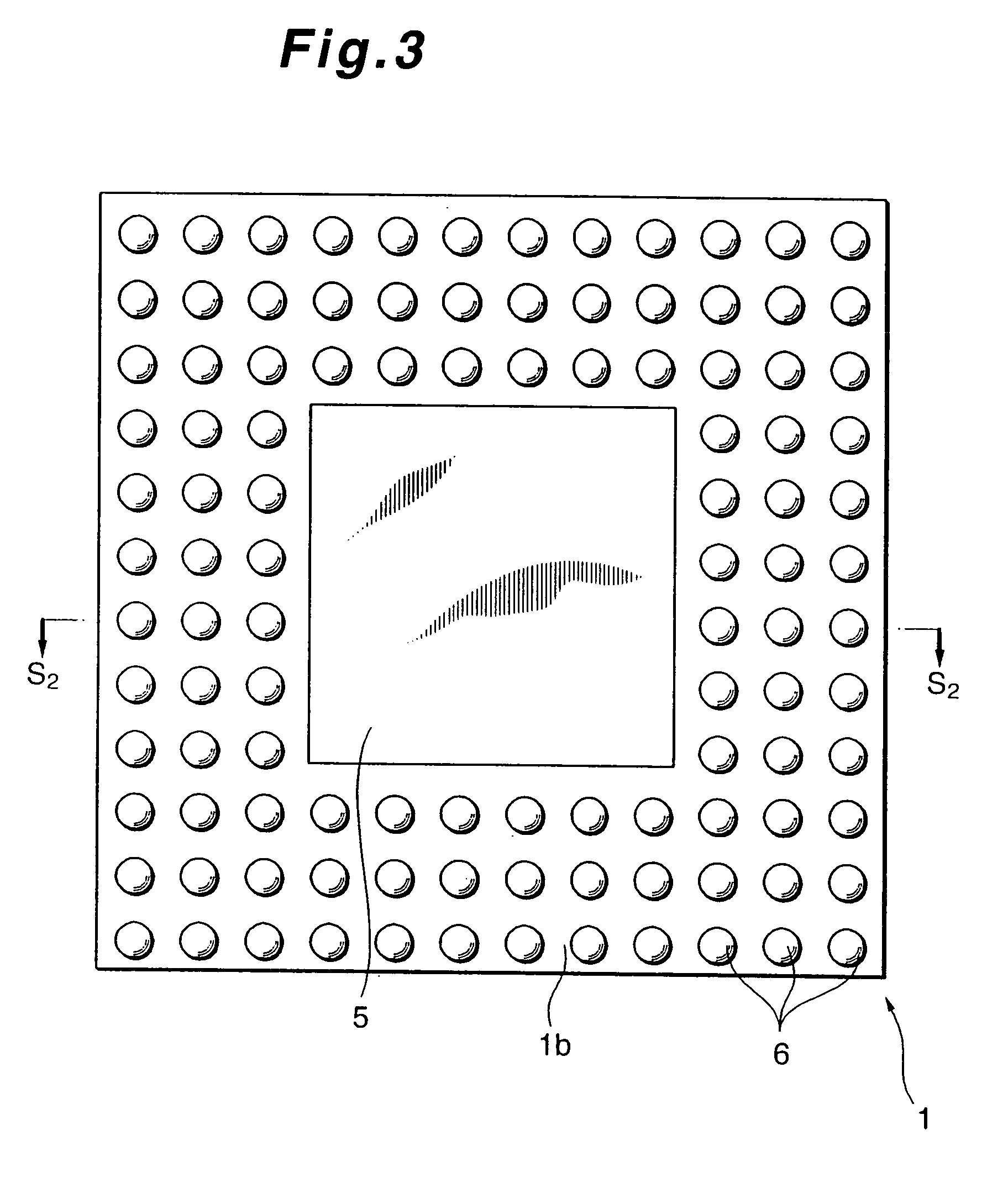Semiconductor device, method for mounting the same, and method for repairing the same
a semiconductor and device technology, applied in the field of semiconductor devices, can solve problems such as failures of semiconductor devices, cracks or chips in sealant, and failures of mounting devices, and achieve the effect of reducing the occurrence rate of semiconductor device failures
- Summary
- Abstract
- Description
- Claims
- Application Information
AI Technical Summary
Benefits of technology
Problems solved by technology
Method used
Image
Examples
first embodiment
Modification of First Embodiment
[0089]FIG. 14 is a sectional view showing a modification of the first embodiment. In this semiconductor device, each through-hole 7 is filled with a filling material 15. For the filling material 15, it is possible to use materials which have elasticity and non-heat-conductivity, like gel resins which do not exhibit fluidity after the through-hole 7 is filled, such as a silicon-based resin “JCR6110” by Toray Industries, Inc. or a polyimide-based resin “PIX8200” by Hitachi Chemical Co., Ltd. The filled portion 15 is formed by injecting a gel resin from the upper side of the openings of the through-holes 7. As shown in FIG. 14, by the provision of the filled portion 15 in the through-hole 7, it is possible to prevent failures ascribable to corrosion, for example, of the joint between the terminal 8 and the solder ball 6, and also preclude the occurrence of failures resulting from the infiltration of foreign matter into the through-holes 7 from outside.
[...
second embodiment
[0091]FIG. 15(a) is a sectional view schematically showing the through-hole and its vicinity of the semiconductor device according to a second embodiment of the present invention. FIG. 15(b) is a plan view showing the through-hole and the vicinity on an enlarged scale.
[0092] The difference from the semiconductor device according to the first embodiment is that an electrode 16 as an electrical conductor is formed in the shape of a semi-circular column within the through-hole 7 in the semiconductor device of the second embodiment. For forming the conductor made by an electrode material 16, it is possible to adopt a method of manufacturing a semicircular column part, setting this column part in each through-hole of the substrate 1, and forming an electrode 16 that fills up the clearance between the column part and the through-hole 7, and then extracting the semi-circular electrode 16. According to the semiconductor device of the second embodiment, the electrode 16 is additionally conn...
third embodiment
[0096]FIG. 17(a) is a sectional view schematically showing a through-hole and its vicinity of a semiconductor device according to a third embodiment of the present invention, and FIG. 17(b) is a plan view showing the terminal 31 of the substrate 1.
[0097] The only difference from the semiconductor device of the first embodiment is that a semi-cylindrical opening 31a is provided in the terminal 31 as shown in FIG. 17(b) in the semiconductor device in the third embodiment. According to the semiconductor device of the third embodiment, the bond area between the solder ball 6 and the terminal 31 is increased and the bond strength of the solder ball is increased.
[0098] The repair method and the mounting method of the semiconductor device according to the third embodiment are the same as those in the first embodiment.
[0099] A filler of gel resin may be provided that fills up the through-hole of the semiconductor device according to the third embodiment.
[0100]FIG. 18(a) is a sectional v...
PUM
 Login to View More
Login to View More Abstract
Description
Claims
Application Information
 Login to View More
Login to View More - R&D
- Intellectual Property
- Life Sciences
- Materials
- Tech Scout
- Unparalleled Data Quality
- Higher Quality Content
- 60% Fewer Hallucinations
Browse by: Latest US Patents, China's latest patents, Technical Efficacy Thesaurus, Application Domain, Technology Topic, Popular Technical Reports.
© 2025 PatSnap. All rights reserved.Legal|Privacy policy|Modern Slavery Act Transparency Statement|Sitemap|About US| Contact US: help@patsnap.com



